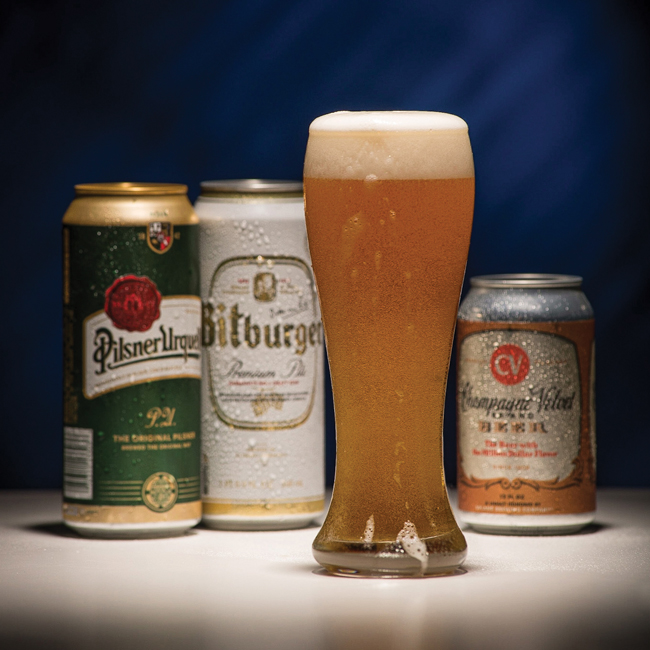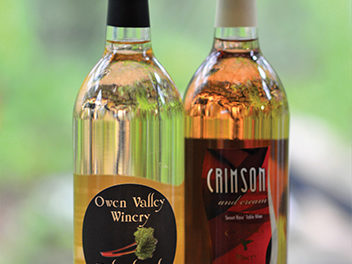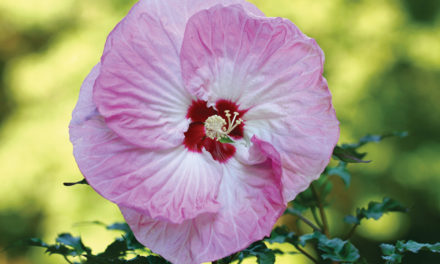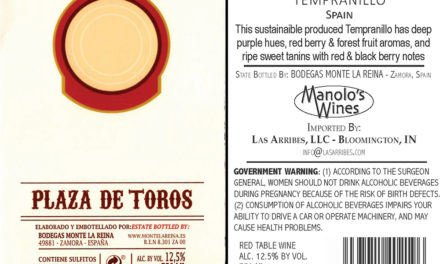
by GREG SIERING
The pilsner beer style was born in Plzeň, Bohemia (now the Czech Republic), when the residents became fed up with the poor-quality ale they were drinking and brought in a Bavarian brewer, Josef Groll, with a simple directive: Brew us better beer. In 1842, Groll combined bottom-fermenting lager yeast, lightly kilned malts, and spicy Saaz hops to produce a golden, crisp, hoppy lager that would take Europe by storm.
Pilsners are moderate in alcohol content— typically 4.5–5.5% alcohol by volume (ABV)— use lightly kilned malts that lead to a pale golden color and slightly bready flavor, and German noble hops that are herbal, flowery, and sometimes spicy. They are crisp, well- carbonated, and have a relatively dry finish.

The primogenitor of this style is Pilsner Urquell, which is brewed with the same recipe and techniques Groll introduced almost 180 years ago. It pours an exceptionally clear golden-straw color, with a thick white head that lasts. The aroma is a combination of grainy maltiness and slightly herbal and spicy hops. The taste includes some breadiness, but it is dominated by spicy and floral hops, and a bitterness that catches me at the sides of my tongue and lingers throughout the drink. The hops and malt balance well through the crisp, fairly dry finish—a delightful sensory experience. You can pick up this beer at Kroger or try a bottle at The Tap downtown.
The German variation of this style—often known as a “German pils”—is similar to its Czech siblings, with some subtle differences in body, dryness, and hop character. One of the better German pils you will find in town is Bitburger, first brewed in 1883. This beer is also a bright golden color, with strong carbonation and very small bubbles, which accentuate the hop flavor and add to the crisp body. I think this beer has a bit more malt presence, slightly less aggressive hopping, and a better balance. This pils is easy to drink, but every sip carries delightfully complex aromas and flavors. Find it at Big Red Liquors, The Tap, and the Irish Lion.
German immigrants brought pilsners to America, where brewers incorporated locally available corn into their recipes, along with American hop varieties. Bloomington’s Upland Brewing Company offers a taste of this “pre- Prohibition pilsner” in its Champagne Velvet, a recreation of the original 1908 recipe. The beer carries a pilsner’s signature pale gold color, but the aroma is slightly sweeter due to the corn, with floral overtones and hints of white wine. The flavor follows in kind, with subdued malt and hop flavors—well-balanced but less expressive than the European pilsners. Despite its sweetness, this beer finishes fairly dry, with the grain flavors lingering more than the hops. This is a good beer for easy drinking, with more character than mass-produced American light lagers, but not as much complexity as its German and Czech cousins.
The next time a craft beer fan scoffs at pale lagers, remind them of their roots, buy them a classic pilsner, and enjoy the taste of brewing history. Prost!







